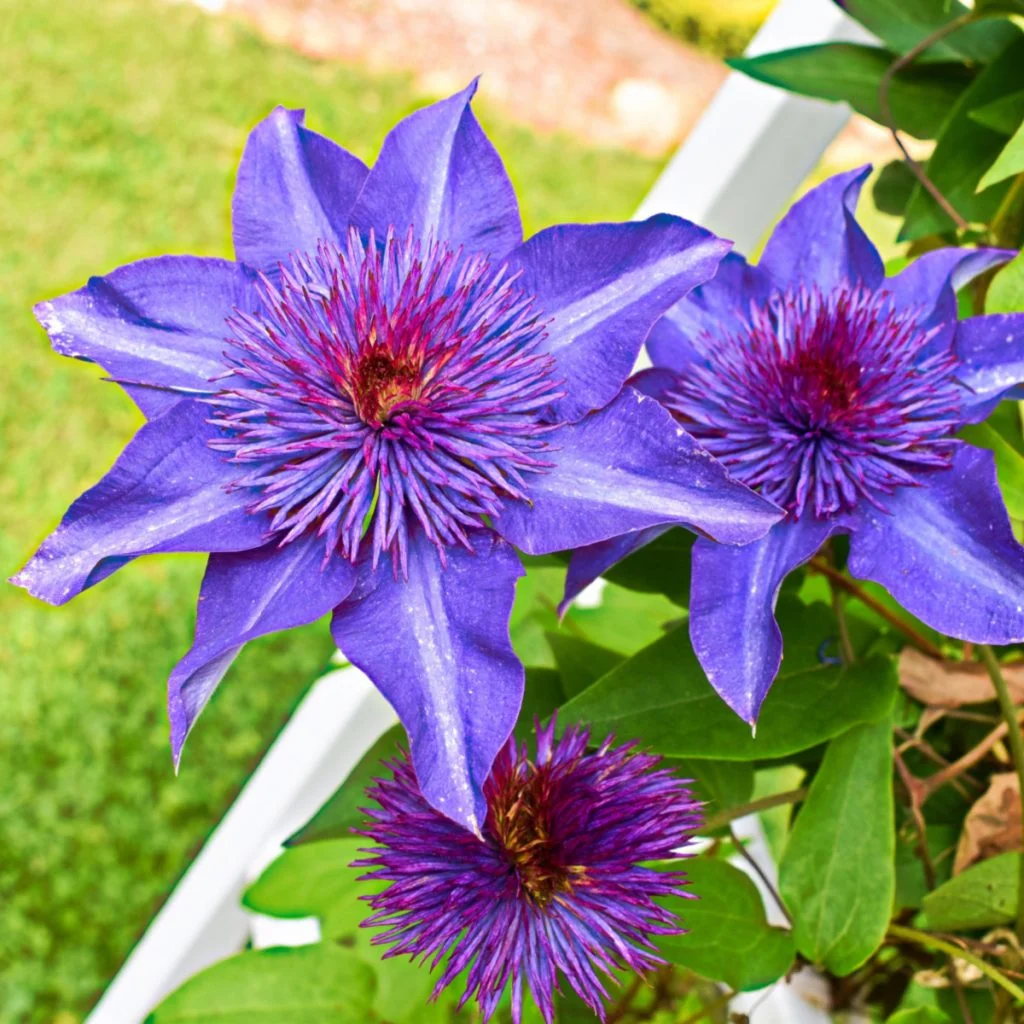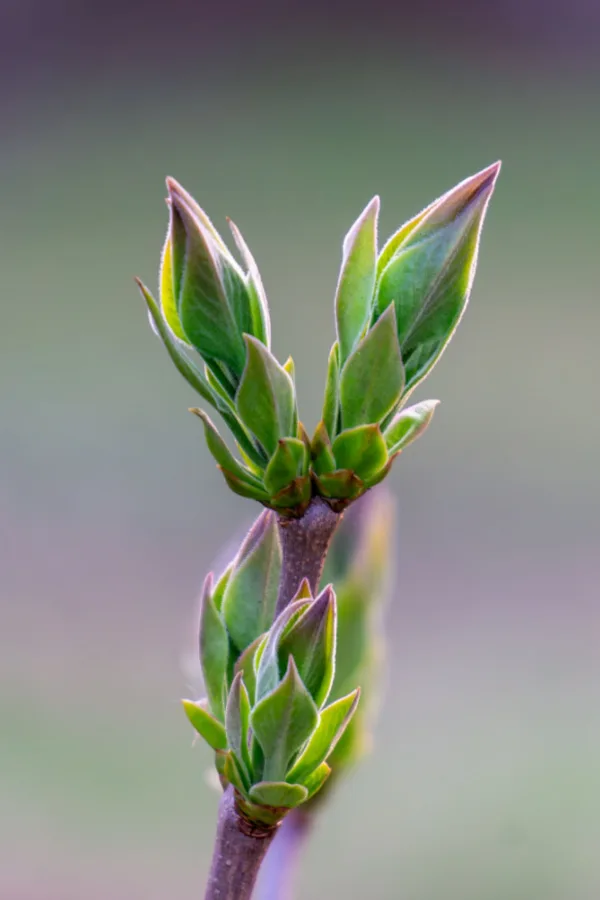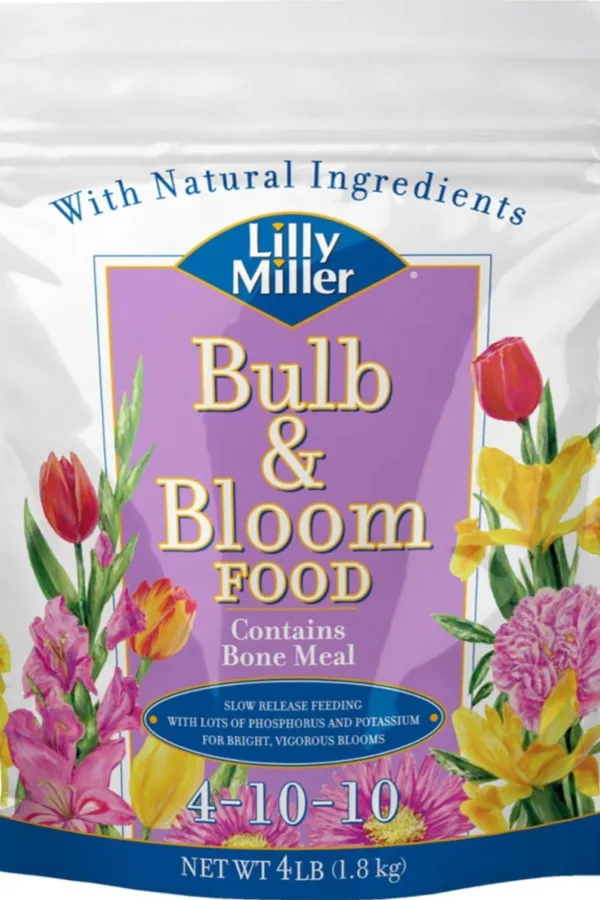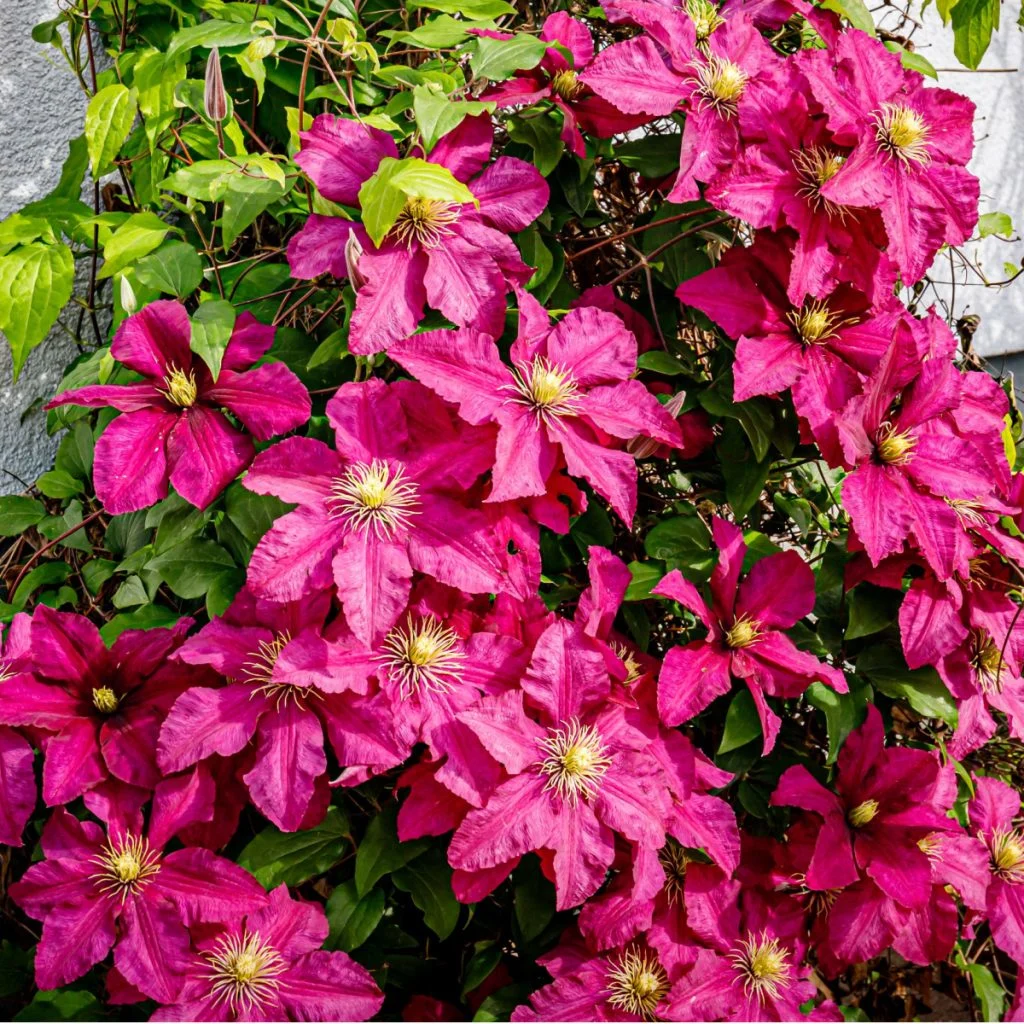Looking for the best way to fertilize your clematis this spring and get it to flower bigger and better than ever?
If you want your clematis to fill up with flowers this year, the best thing you can do is to give it a good start in early spring. And one of the best ways to do that is to provide it with the power it needs to flower. Fertilizing at just the right time, and with the right kind of fertilizer, can make all the difference when it comes to how many blooms your plant produces.
Clematis are known for their stunning, star-shaped flowers, and with the right care, they can put on an incredible show throughout the growing season. These beautiful vines grow well on trellises, fences, light poles, or even arbors. Some varieties produce flowers that are six inches wide or more, turning any space into a colorful focal point.

But to get those big blooms, your clematis needs help early in the season, right when it’s just starting to wake up. Why? Because this is right when the plant starts forming the buds that will eventually become flowers!
The Best Way To Fertilize Clematis – Get More Blooms This Year!
Why Clematis Sometimes Fail To Bloom
There’s nothing more frustrating than having a healthy-looking clematis that doesn’t bloom at all. While the plant might look green and full, it can still come up short when it comes to flowers. And when they do, there are a few common reasons why it happens.
One reason is that the plant is simply too young. Clematis often takes a year or two after planting before they begin to bloom heavily. In that first year, they’re focused on building a strong root system. So if your clematis is still new to your garden, it may just need more time.
Another issue that can keep clematis from blooming is pruning at the wrong time. Some types of clematis bloom on old wood, meaning they set their flower buds on stems that grew the previous year. If you prune these varieties too late in winter or early in the spring, you can cut off the very stems that were getting ready to bloom.

But the most common reason for poor blooming is related to soil nutrition. Either the soil lacks the nutrients clematis needs, or it has too much of the wrong kind of nutrients. In both cases, your plant won’t be able to form enough healthy flower buds.
The good news is, this is easy to fix when you fertilize your clematis in the spring with just the right nutrients!
Understanding What Clematis Needs To Bloom
Like most plants, clematis needs a few key nutrients to grow and flower. The most important are nitrogen (N), phosphorus (P), and potassium (K). These three nutrients are what you’ll see listed on most bags or bottles of fertilizer. They’re usually shown as a set of three numbers such as 10-10-10. This represents how much of each nutrient is included.
Here’s how each one works:
- Nitrogen (N) helps clematis grow big and green. It fuels leaf and stem growth, but if there’s too much of it, your clematis may grow tall and leafy without producing many flowers.
- Phosphorus (P) supports strong roots and helps clematis form flower buds.
- Potassium (K) strengthens the plant overall and plays a big role in how many flowers it produces and how well it resists disease.
For clematis, the key is balance when you fertilize in the spring – but not in totally equal amounts. A good clematis fertilizer should have more phosphorus and potassium and less nitrogen. Too much nitrogen will push the plant to grow leaves and vines instead of blooms. But more phosphorous and potassium? That means more flowers!

The Best Fertilizer For Clematis Plants
Clematis do not need anything fancy when it comes to fertilizer, but choosing the right mix really matters. You should avoid using general-purpose fertilizers like 10-10-10 or 15-15-15. These have equal parts of nitrogen, phosphorus, and potassium, which can lead to leafy growth without many flowers.
Instead, go for a fertilizer that has a lower nitrogen number and higher phosphorus and potassium. A formula like 4-10-10 or 4-8-10 is a much better option.
These blends will still give your clematis the energy to grow healthy leaves and stems, but more importantly, they’ll provide the nutrients it needs to develop flower buds and blooms. Affiliate Link: Lilly Miller Bulb & Bloom Food 4-10-10 4lb
Fertilizers made for flowering bulbs often work great for clematis. Many of these also include bone meal, which is a natural source of phosphorus and can help with root and flower development. Most of these bulb fertilizers come in granular form, which is easy to apply around the base of the plant.

When To Fertilize Clematis In Spring
Timing is everything when it comes to feeding clematis in the spring. The first round of fertilizer should go down just as your plant starts to come out of dormancy. This is usually when you first notice small green shoots or leaves beginning to grow near the base of the vine.
It’s very important to apply the fertilizer before your clematis has developed a full set of leaves. If you wait too long and the plant already has a lot of foliage, it will focus the nutrients on growing more vines and leaves instead of flowers. But if you catch it early, the plant will use the energy to produce buds and prepare for blooming.
To apply, simply sprinkle about 1/2 to 3/4 of a cup of fertilizer around the base of the plant. If your clematis is mulched, pull the mulch back so the fertilizer can touch the soil directly.
After spreading the fertilizer, water it in well. This helps the nutrients soak into the soil where the roots can reach them. Once watered, replace the mulch to help hold in moisture and keep the soil temperature steady.
How Often To Fertilize Clematis
After the first spring application, your clematis will also benefit from regular feedings throughout the growing season. A good rule of thumb is to fertilize every four weeks until midsummer. That means giving your clematis a boost about once a month in March or April, May and June.

Use the same fertilizer blend each time, and repeat the same application method: sprinkle it around the base, water it in, and cover with mulch. These consistent feedings will keep your clematis well-supplied with the energy it needs to form new buds and continue blooming. In fact, it can help it bloom a second time! See our article: How To Get Clematis To Bloom Again & Again – All Summer Long!
By the time late July or August rolls around, it’s time to stop feeding your clematis. Fertilizing too late in the summer can actually do more harm than good. Instead of using the energy to prepare for winter, the plant will keep trying to grow new vines and leaves.
This late growth doesn’t have time to harden off before cold weather arrives, which can leave the plant more vulnerable to damage. By taking time to fertilize your clematis this spring and summer, it will reward you with a breathtaking display of blooms like never before! For more clematis care tips, see: How To Care For Clematis In Late Summer – And What To Avoid Doing!
This Is My Garden
Follow Our Facebook Page For Great Gardening Tips And Advice! This Is My Garden Facebook Page
This Is My Garden is a garden website created by gardeners, for gardeners. Jim and Mary Competti have been writing gardening, DIY and recipe articles and books and speaking for over 15 years from their 46 acre Ohio farm. They publish three articles every week, 52 weeks a year. Sign up today to follow via email, or follow along!
